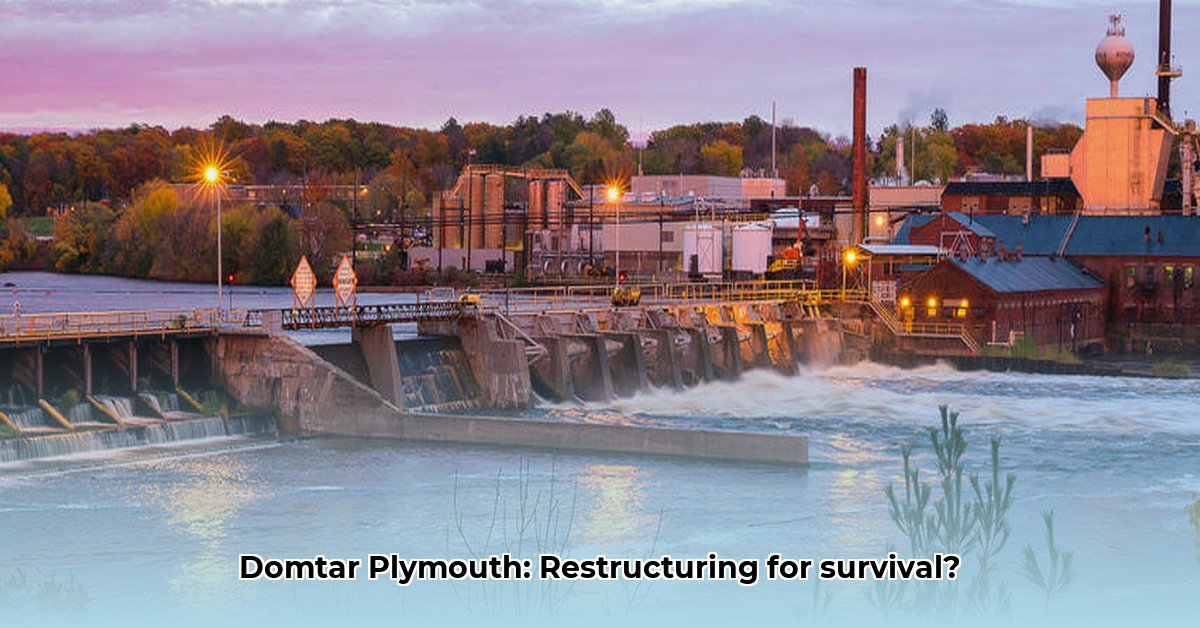
The Domtar paper mill in Plymouth, North Carolina, is undergoing a significant restructuring, prompting a crucial examination of its future and its impact on the local community and the broader paper industry. This transformation involves both challenges and opportunities, balancing economic viability with environmental stewardship and social responsibility. The mill's shift reflects larger trends within the paper sector: increasing consolidation, heightened emphasis on sustainability, and adaptation to evolving market dynamics. Will this restructuring ensure long-term success? This in-depth analysis explores the key factors at play.
Balancing Green Goals and Jobs: A Delicate Equilibrium
Domtar's Plymouth mill boasts near-complete reliance on renewable energy – a significant achievement in its commitment to environmental sustainability. This progress, however, has coincided with job losses; approximately 100 positions were eliminated as part of the restructuring. While Domtar's $800 million investment signifies substantial commitment, the effect on the Plymouth community, particularly given the mill's annual $52,000 community contribution, remains a significant concern. This situation forces a critical question: how can we reconcile environmental progress with maintaining local employment? The answer, undoubtedly, is complex.
How can we effectively balance environmental sustainability initiatives with the need to preserve local jobs in environmentally conscious industrial restructuring? This question is particularly relevant given the reported job losses at the Plymouth mill despite substantial investments in renewable energy.
Fluff Pulp's Market Volatility and Strategic Diversification
The Plymouth mill's primary product, fluff pulp (a key component in absorbent hygiene products), faces inherent market volatility. Domtar's acquisition of Home Delivery Incontinent Supplies Co. suggests a calculated strategy to diversify beyond this single product and mitigate these risks. This diversification strategy acknowledges the inherent instability within the fluff pulp market. While the commitment to sustainability certifications like FSC®, SFI®, and PEFC™ enhances its appeal to environmentally conscious consumers, the question remains: Is this diversification sufficient to guarantee long-term stability?
What strategies can paper mills employ to successfully diversify their product lines in the face of market volatility for specific paper products, such as fluff pulp? Domtar's acquisition suggests potential avenues for exploration.
Sustainable Sourcing: A Path Requiring Transparency
The mill's heavy reliance on softwood pulp necessitates a thorough evaluation of its sourcing practices. Transparency regarding reforestation efforts, harvesting methods, and the overall impact on local forests are crucial to address concerns about potential overharvesting and resource depletion. Independent audits could significantly enhance trust and transparency, a necessary step for ensuring the sustainability of the mill's supply chain. The long-term success of this strategy hinges on maintaining a truly sustainable approach to resource procurement. What specific metrics and reporting mechanisms can best assure transparency and accountability in sustainable forestry practices? Independent audits and public reporting could be key.
Navigating the Evolving Landscape of Environmental Regulations
The ever-changing regulatory environment presents another challenge. Increasingly strict limits on carbon emissions and waste disposal will necessitate proactive adaptation. Investment in cleaner technologies and improved waste management are critical for compliance and long-term viability. Domtar must carefully balance the costs of compliance with overall profitability to remain competitive. What technological innovations are most promising for reducing the environmental footprint of paper production, especially addressing carbon emissions and waste management? This is vital for regulatory compliance and maintaining competitiveness.
A Multi-Pronged Approach to Long-Term Success
The restructuring at the Domtar Plymouth mill presents a complex challenge with both risks and rewards. While its commitment to sustainability is evident, long-term success requires a holistic strategy. This means worker retraining programs, securing a sustainable supply chain, and proactively adapting to ever-tightening environmental regulations. The mill's future hinges on effectively managing these competing priorities. What are the most effective strategies for balancing short-term economic needs with long-term sustainability goals in a manufacturing context such as the Domtar Plymouth mill? This is a critical question for the mill's longevity.
A Collaborative Roadmap for Future Success
The coordinated efforts of various stakeholders are critical to ensuring the success of the restructuring. A collaborative approach is necessary.
| Stakeholder | Short-Term Actions | Long-Term Actions |
|---|---|---|
| Domtar Management | Complete restructuring; employee retraining; cost-cutting measures. | Diversify product lines; explore alternative raw materials; adapt to stricter regulations; invest in R&D. |
| Local Community | Advocate for community investment; explore alternative economic opportunities. | Foster partnerships with Domtar; facilitate retraining; explore economic diversification; community planning. |
| Investors | Monitor profitability; assess restructuring effectiveness. | Evaluate Domtar's long-term sustainability strategy; assess risks; consider the long-term value of sustainability. |
| Environmental Groups | Monitor Domtar's environmental performance; engage in open dialogue with Domtar. | Advocate for higher environmental standards; promote transparency; support sustainable forestry initiatives. |
The Domtar Plymouth mill serves as a compelling case study in the complex interplay between economic development, environmental responsibility, and community well-being. The outcome will largely depend on how these interconnected factors are managed. The ongoing journey will shape the ultimate destiny of this facility.